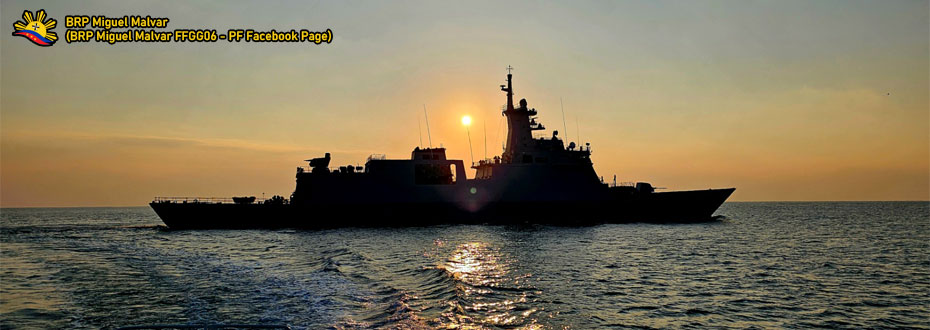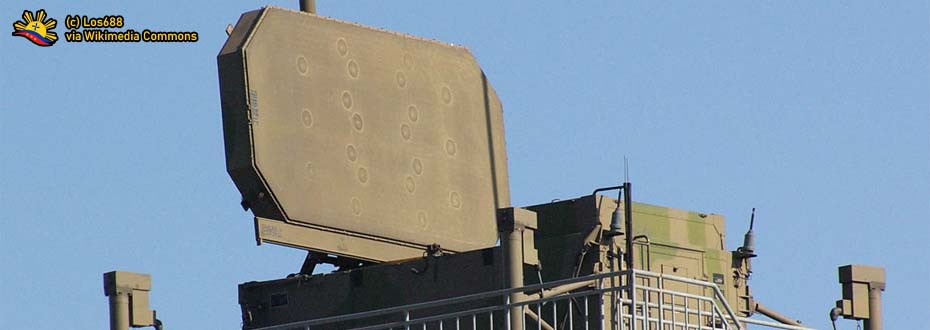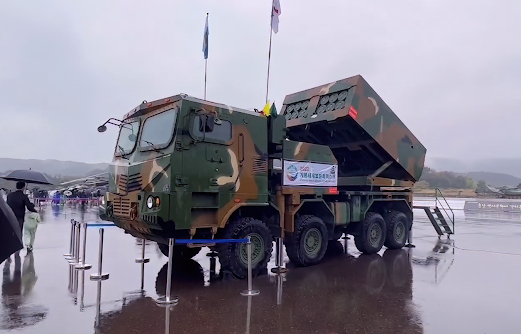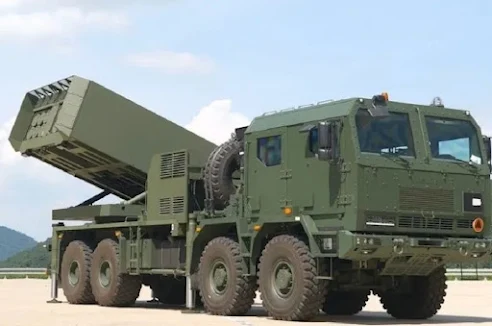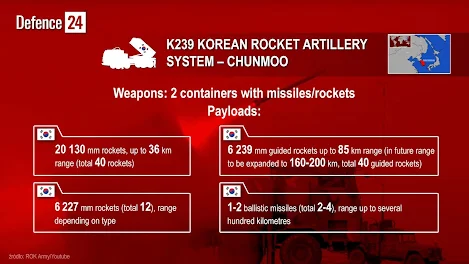 |
| The budget received by the Philippine Coast Guard amounts to around Php 29,420,681,000.00. |
In the
2024 General Appropriations Act as enacted by the Congress and signed by the President in the last quarter of the year 2023, the budget received by the Philippine Coast Guard amounts to around
Php 29,420,681,000.00.
Detailing further, the budget allotted for Personnel Services or PS amounts to Php 19,727,892,000.00, Maintenance and Other Operating Expenses or MOOE amounting to Php 4,948,744,000.00, and Capital Outlay that amounts to Php 4,744,045,000.00.
As we notice, the budget intended for Personnel Services is higher, which makes sense considering the significant number of newly recruited personnel that the Philippine Coast Guard has recently, as the entrant rank of a
Seaman Third Class has a basic salary amounting to Php 29,668.00, plus other benefits such as Hazard Pay that will make their net pay per month increased to around
Php 35,000.00 to Php 36,000.00, with other deductions considered ranging from income taxation to availed loans and monthly contributions.
The budget allotted for both the Maintenance and Other Operating Expenses or MOOE and Capital Outlay or CO does not come far altogether, as the former focuses more on maintenance and operating expenses for the Philippine Coast Guard’s outposts and facilities, traveling expenses for its personnel to attend seminars and trainings, and fuel expenses for both of its fleet of vehicles, aircraft like the
Airbus H145 Helicopter, and white-hulled vessels that venture out to the sea like several of its Parola-class vessels patrolling the West Philippine Sea.
Compared to the
2023 General Appropriations Act, the Philippine Coast Guard saw its largest significant increase to-date, as the 2023 figures come only at around
Php 21,908,100,000.00, of which its Capital Outlay only amounts to Php 729,976,000.00, of which this means that the Philippine Coast Guard’s budget under the 2024 General Appropriations Act for Capital Outlay comes as more than 4x larger than the 2023 figures, although the budgets for both Personnel Services (PS) and Maintenance and Other Operating Expenses (MOOE) saw its respective increases, albeit not as significant as the presented budget for the Capital Outlay.
Comparing both budgets even further, the Philippine Coast Guard receives a significant increase amounting to Php 7,512,581,000.00, of which the figures for Capital Outlay comes with the difference amounting to Php 4,014,069,000.00, whereas the increase for both Personnel Services or PS and Maintenance and Other Operating Expenses or MOOE comes at around Php 1,728,950,000.00 from the previous year's budget of around Php 17,998,942,000.00, and Php 1,564,863,000.00, compared from the previous year’s budget of around Php 3,179,182,000.00, respectively.
This simply means that the Philippine Coast Guard, like the Department of National Defense, receives the significant budget increase it deserves to get, as the maritime law enforcement agency aims to get additional white-hulled vessels along the way.
Take note that
like in the 2024 defense budget, the
Philippine Coast Guard comes with an exemption in terms of procurement under the R.A. 9184, although similar provision applies. This further shows the ever-increasing significant role that the Philippine Coast Guard plays in securing territorial integrity whereby it also receives additional funding through other means, such as its own confidential fund.
CONFIDENTIAL FUNDS
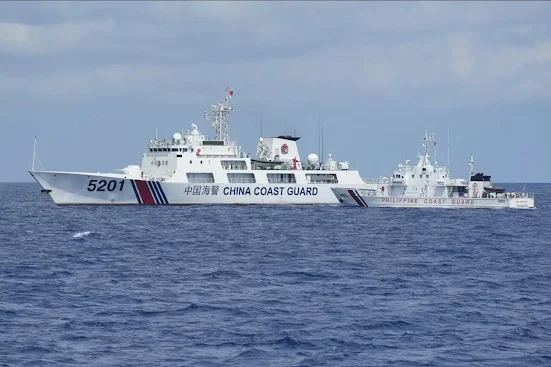 |
The intensified situation in the West Philippine Sea helped increase the Philippine Coast Guard's budget for the improvement of their mandate.
Image Source. |
Another thing to highlight regarding the Philippine Coast Guard’s budget under the 2024 General Appropriations Act is the approval of the re-aligned confidential funds to the maritime law enforcement agency from other departments like the Department of Information and Communications Technology or DICT, or
the Department of Education or DepEd.
Apparently, the escalated tensions between China and the Philippines in the year 2023 prompted the need for confidential funds for the proper agencies that need it.
According to this report from the
online publication of the Philippine Daily Inquirer, the Philippine Coast Guard received at least Php 200 Million additional confidential funds as the result of the realignment that took place, with other beneficiaries being the National Intelligence Coordinating Agency or NICA amounting to Php 300 Million, National Security Council or NSC amounting to Php 100 Million, and Php 381.8 Million for the Department of Transportation, of which we will also cover under this article.
Under the 2024 General Appropriations Act, the confidential funds of the Philippine Coast Guard comes as an item under the Maintenance and Other Operating Expenses or MOOE, whereby it amounts to around Php 400 Million, under the item named Confidential, Intelligence, and Extraordinary Expenses.
This means that aside from the Php 200 Million confidential fund that the Philippine Coast Guard received through the realignment of funds before the 2024 General Appropriations Act gets enacted, the agency saw an increase of at least Php 190 Million on its own confidential fund, of which this is something that the Philippine Coast Guard deserves to get as they are now playing a role in the frontline, escorting and protecting Philippine interest in highly tensioned areas of the country like the West Philippine Sea.
Going back five years, the Philippine Coast Guard only receives at least eight-figures of confidential fund budget that does not surpass the
Php 30 Million to Php 50 Million mark. For instance, the confidential fund budget for the maritime service branch under the 2019 budget only amounts to
Php 39 Million, then reduced to
Php 10.990 Million in the 2020 budget, and then it reduced further down to
Php 10.100 Million under the 2021 budget and Php 10 Million under both
2022 and
2023 General Appropriation Acts.
This means that the Philippine Coast Guard’s confidential funds for the last five (5) years comes as small compared to the one it received under the 2024 General Appropriations Act. And that alone speaks volumes to the urgency of providing the maritime law enforcement agency the resources it needs to sustain and continue its operations, especially now that they go hand in hand with their fellow uniformed counterparts in the Armed Forces of the Philippines in pushing external defense posture.
The discussion is not just limited to the budgeting of the Philippine Coast Guard itself, but also going further to the ones that the Department of Transportation or DOTr sets to get, whereas mentioned earlier, it also received the portion of the realigned confidential funds of which they can use it to improve and develop further its projects relating to the country’s resolve of enforcing its outposts in the West Philippine Sea, specifically within the Municipality of Kalayaan, Palawan.
DOTR AND THE WEST PHILIPPINE SEA
 |
The island now comes with a fully cemented runway that improves landing and takeoff conditions into and out of the island.
Image Source. |
Another thing to highlight regarding this topic is that the Philippine Coast Guard’s mother department, the Department of Transportation or DOTR, also has budget allotments aimed at funding the necessities of the troops and civilians living and working within the Kalayaan Island Group.
One of those projects slated by the Department of Transportation in its budget under the 2024 General Appropriations Act is the airport development and expansion of the Racundo airfield, also known as the Pag-Asa island airport.
The project
amounts to around Php 1.5 Billion, of which it comes as an item under the Capital Outlay, specifically under the project compilation item named as the ‘Construction, Rehabilitation, and Improvement of Other Transportation Infrastructure - Aviation’.
This means that any of the
improvements that the Pag-Asa island airport receives treats in a way that comes equally that to the country’s key airports, showing that this comes as a way for the Philippine government to further reinforce its indisputable right over these domains, as this helps the government improve the logistics chain by ensuring the improvement of this essential facility that caters both civilian and military-owned Philippine aircraft.
Another thing to point out is a special item under the project compilation item named as the ‘Construction, Rehabilitation, and Improvement of Other Transportation Infrastructure - Maritime’, the Department of Transportation provided a special project intended to
build up a Shelter Port in another island within the Municipality of Kalayaan. This refers to the island of Lawak, which is another Philippine outpost in the West Philippine Sea and also the 2nd largest Philippine-manned feature of the municipality.
Into the details, the Lawak Island Shelter Port costs at around Php 800 Million, which is a reasonable price considering that this actually involves building a new structure into a Philippine outpost that other countries also lay claim, including China.
Both of the projects mentioned helps enforce the country’s sovereignty and dominion over the features that define the Kalayaan Island Group, of which this comes alongside Philippine Coast Guard’s significant increase in its overall budgeting prospects, particularly to its Capital Outlay and its confidential funds, as the projects in the municipality
encourages more civilians to live and settle in this area aside from deploying troops, just like with Pag-Asa island itself.
All of which covers the welfare of both troops and civilians living in Palawan’s westernmost municipality, while being defiant against the ever-increasing aggression showcased by the
China Coast Guard and maritime militia.
This also comes as a gesture of assuring the country’s national interest in the West Philippine Sea, as the national government, through the Department of Transportation, are now erecting more structures that further solidify the country’s presence.
ENDING NOTE
%20-%20PDA.jpg) |
The acquisition of five more Teresa Magbanua-class MRRVs will come from a Japanese ODA loan arrangement.
From Wikimedia Commons. |
The Philippine Coast Guard, like the entire Department of National Defense, saw a significant increase in its 2024 budgets under the said year’s General Appropriations Act, under the
Republic Act 11975. All of which comes with big-ticket acquisition projects and increased operational funding requirements in mind, aside from the ongoing recruitment processes that both the Philippine Coast Guard and different branches under the Armed Forces of the Philippines currently conduct.
This comes noticeably to the significant increase that the Philippine Coast Guard has received in both on its
Capital Outlay and confidential fund allotments, in the same manner that the Armed Forces of the Philippines received for the Revised AFP Modernization Program and the budget proper of the entire Department of National Defense, with the former having the
plans to purchase at least three (3) vessels from an Australian-owned shipbuilding company based in Cebu.
Take note that both the budget of both the
Philippine Coast Guard and the
Department of National Defense comes differently to the specific budgetary items that the
Department of Transportation has for infrastructure, as they have allotments that are specific to several areas in the Kalayaan Island Group within the West Philippine Sea area, namely the improvements for the
Pag-asa island airport and the construction of the
Lawak Island Shelter Port that will benefit the logistics and welfare of both Filipino citizens and troops in the area.
With the 2024 General Appropriations Act now rolling from its January 1 effectivity date, it is with the likelihood that there will be interesting developments regarding differing military and coast guard-related acquisition projects and programs, as these processes have the aims of improving the overall capabilities of the Philippine government, through the military and the coast guard, to intensify its foothold and increase its presence further in the West Philippine Sea area.
All it takes now is to wait and see how the materialization phase of each acquisition project may go, as it comes with differing timelines and dates of where and when the release of the
Special Allotment Release Orders or SARO documents from the Department of Budget comes out.
Still, we are hoping and looking forward that the annual budget for these concerned agencies and departments remains constant or in an increasing trend in the succeeding years, as these help make the
country secured from external threats later on.
To access the following documents, here are the following links below.
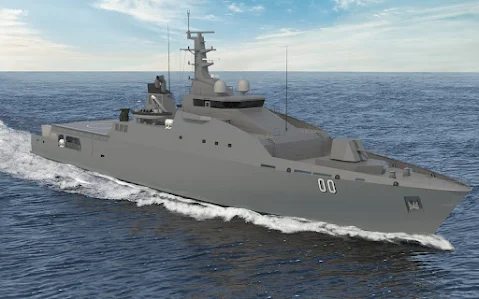



%20-%20PDA.jpg)








